Post-Op, weeks two and three
Much of my second week of recovery was devoted to Criterion’s new Blu-ray of War and Peace. And now that I’m slightly more mobile, I’m spending a bit less time watching movies. In this post I’ll add a few notes about my viewing in the second and third weeks of my post-op recovery. It’s been a pretty mixed bag.
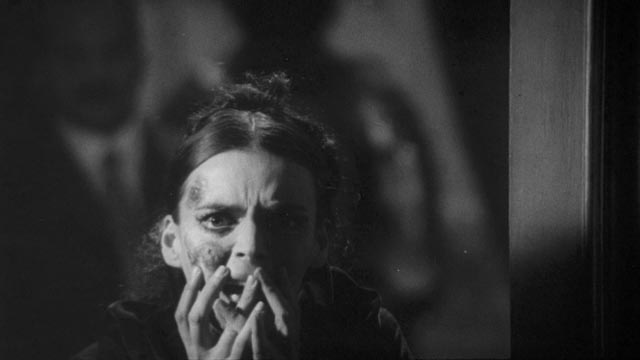
Massimo Pupillo’s Terror Creatures from the Grave (1965) is the third Italian Gothic on Severin’s Barbara Steele triple bill Blu-ray. Made towards the end of the Gothic cycle, it’s the least interesting of the three – the others are Mario Caiano’s Nightmare Castle (also 1965) and Sergio Corbucci and Antonio Margheriti’s Castle of Blood (1964). A lawyer arrives at a gloomy castle to discover that he’s been summoned by a dead man, an occultist, who is out to get revenge on his faithless wife (Steele) and the men who helped her kill him. His method involves reanimating Medieval plague victims buried on the grounds. Steele is more of a (major) supporting player here in one of the villainous roles so well suited to her dark, distinctive looks.
*
Umberto Lenzi
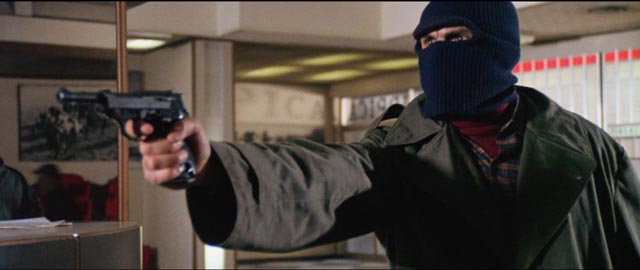
I went on a bit of a poliziotteschi binge triggered by Grindhouse’s deluxe new edition of Umberto Lenzi’s The Tough Ones (1976) – two Blu-ray disks plus a CD of Franco Micalizzi’s soundtrack. Frustrated cop Tanzi (Maurizio Merli) fights against the rules as he tries to stop the violent crime spree of a gang led by Tomas Milian’s devious hunchback. Fast-paced, action-packed and violent, it displays Lenzi’s strengths in this particular genre. One of the many extras is an interesting feature-length survey of the director’s career by Callum Wadell, which spurred me to watch more of his cop movies. That and a lengthy conversation between Lenzi and composer Franco Micalizzi fill out disk one, while the second Blu-ray has hours of documentaries and interviews covering the careers of Lenzi, co-writer Dardano Sacchetti, Merli, Milian and several other cast members.
In The Cynic, the Rat and the Fist (1977), Merli again plays Inspector Tanzi, but Milian turns up as a different criminal out to get revenge for having been put in prison. Milian stars as the good guy in Syndicate Sadists (1975) – unfortunately named Rambo – who plays two violent gangs against each other Yojimbo-style in order to save a kidnapped boy. Gang War in Milan (1973) perhaps suffers from the absence of a star like Milian or Merli (Antonio Sabato is the lead), but mostly it remains somewhat unengaging because its story of rival gangs fighting for control of the city’s drug and prostitution rackets lacks any sympathetic protagonist – everyone’s a scumbag. On the other hand, Violent Naples (1976) is one of Lenzi’s best, with Merli as yet another cop, this time sent to the southern city to help clean up out-of-control crime, from petty thieves to violent bank robbers to big-time Mafiosi. The film’s highlights are a pair of hair-raising high-speed motorcycle rides across the city, shot without permits in regular traffic.
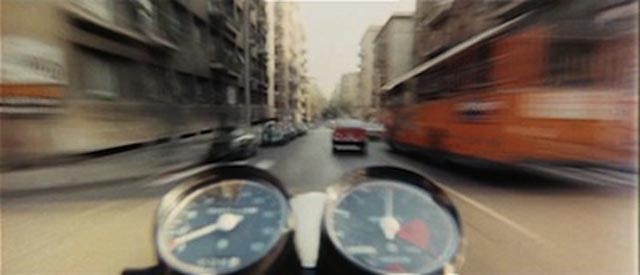
Watching these five movies back-to-back in a couple of days confirmed Lenzi’s stature as a master of the form, but also highlighted the formulaic aspects of the genre – not just reoccurring cast members and the repetition of various plot points, but also the reuse of actual shots as stock footage from one movie to the next, particularly in chase sequences. This mixture of creativity and budget-minded efficiency illuminates the inextricable bonds between art and commerce in popular movie-making.
*
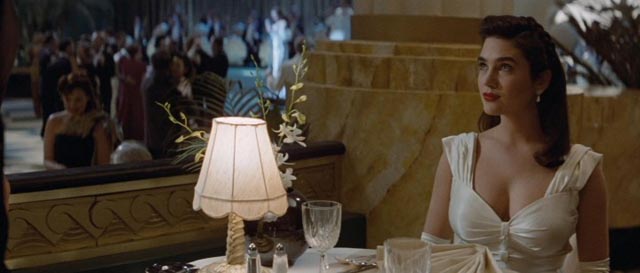
As a palette cleanser, I followed this Lenzi-fest with Joe Johnston’s Disney-produced The Rocketeer (1991), which I’d never seen before. A slick comic book adaptation, it seemed surprisingly violent for a movie obviously targeted at kids – rather a lot of characters are burned to death. The main attraction is a young Jennifer Connelly, who looks absolutely gorgeous in period costumes.
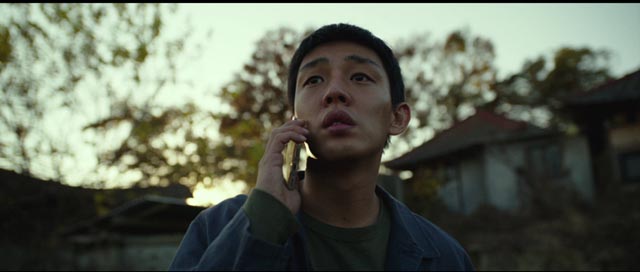
Maybe it was viewing fatigue, but I didn’t get a lot out of a first encounter with Lee Chang-dong’s award-winning, critically revered Burning (2018). I’m fine with oblique storytelling and lingering ambiguity, but I was continually irritated by Yoo Ah-in’s performance as protagonist Lee Jong-su. His passivity and inarticulousness amount to an almost complete lack of affect which frequently borders on some kind of mental defect. When he finally does take action in a violent explosion, it felt to me more like a writerly contrivance than an inevitable dramatic conclusion. At some point I’ll have to watch it again to figure out what it was that I might have been missing.
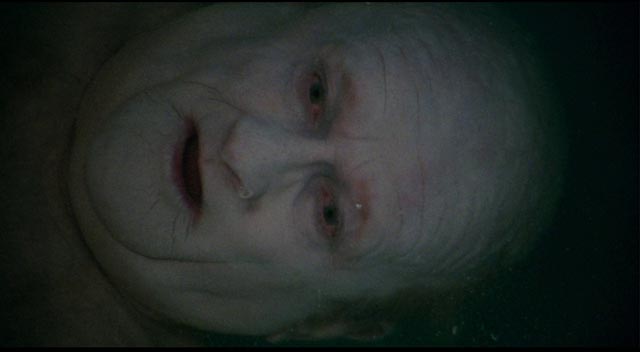
I’ve seen quite a few Ozploitation movies, but I wasn’t aware of Tony Williams’ Next of Kin (1989) until Severin recently released it on Blu-ray. (I assume it was referenced in Mark Hartley’s documentary Not Quite Hollywood [2008], but it’s years since I saw that.) Set in a gloomy old mansion which has been a family-run retirement home for decades, it begins low-key with the return of the recently deceased owner’s daughter and slowly builds a deepening atmosphere of dread as bad things begin to happen – a shadowy figure is seen in the grounds at night, residents are injured and begin to die. In one really creepy sequence an old man is discovered drowned in a bathtub. Williams creates an aura of supernatural dread which makes the final revelation of a family history of homicidal madness a bit of a letdown. But up until the conventional ending, it’s a very effective exercise in atmospheric horror.
*
The Blood Island Collection
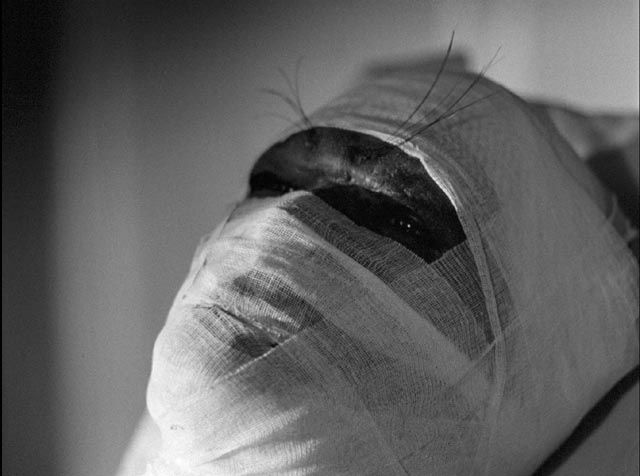
Somewhat less classy but maybe more entertaining is Severin’s Blood Island Collection box set, which contains four key movies from the Filipino exploitation boom of the 1960s and ’70s. Producer-director Eddie Romero and director Gerardo De Leon were responsible for much of the international success of these movies, in a number of genres, but the ones which have had the greatest staying power are the often off-the-wall horror films. Both filmmakers were apparently somewhat disdainful of this work, though they threw themselves into it with professional commitment if not complete enthusiasm. (I was really surprised when, in 1981, I had a chance to see Romero’s epic Aguila [1980], a three-and-a-half hour meditation on a turbulent century of Filipino history.)
The Severin set includes the first of these horrors, Terror is a Man (1959), an effective but uncredited adaptation of H.G. Wells’ The Island of Dr. Moreau, in which the sole survivor of a shipwreck washes up on a Pacific island where a surgeon, formerly of New York, is using surgery and chemistry in an attempt to create improved human beings from animals. Directed by De Leon in a straightforward, no-nonsense style and shot in atmospheric black-and-white by Emmanuel I. Rojas, with generally good performances from Richard Derr (star of George Pal’s When Worlds Collide [1951]) as the castaway, Francis Lederer as the doctor and Greta Thyssen as the doctor’s wife, Terror is a Man is a better-than-average B horror of the period.
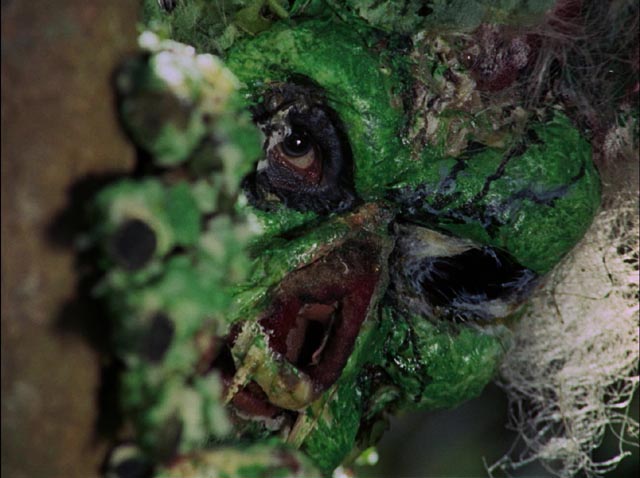
Jumping ahead a decade, and now shooting in colour, Romero and De Leon abandon the relative elegance of that movie to plunge into gaudy exploitation with the so-called Blood Island Trilogy starring ex-pat John Ashley as, in the first movie, a Peace Corps volunteer and in the second and third a doctor, in each case encountering strange events which are terrorizing superstitious island natives. In Brides of Blood (1968), nearby atomic bomb tests have caused deadly mutations – plants, animals and insects have become lethal – and the villagers are regularly sacrificing young women to a monster, which not surprisingly turns out to be one of the few main characters, uncontrollably transforming back and forth between human and monster forms.
In Mad Doctor of Blood Island (1969) and its direct sequel Beast of Blood (1970), Ashley’s Dr. Bill Foster tangles with the mad Dr. Lorca (Ronald Remy in the first movie, Eddie Garcia in the second), who believes he can extend life by infusing human blood with chlorophyll, but only manages to create murderous man-plant hybrids. All three movies feature gore, a bit of nudity, and monster make-ups which are quite endearing in their papier-mâché silliness. (Less charming is some graphic real violence to animals in one sequence in Mad Doctor.) The monster story gives way to action in Beast of Blood, hearkening back to the filmmakers’ earlier war movies, although one of the film’s highlights is a lab with its snarky living severed head.
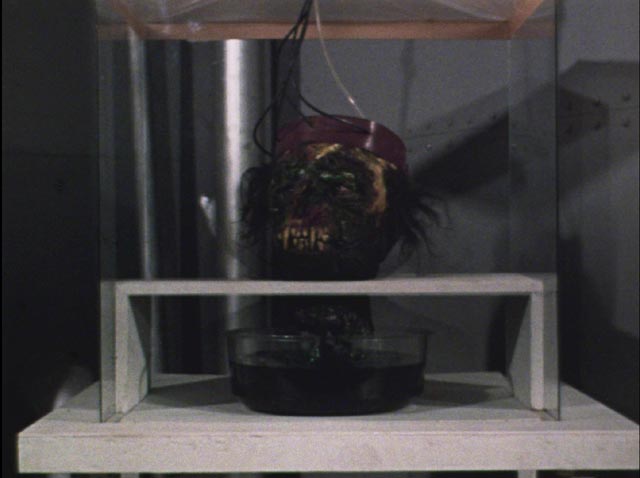
All the movies in the set have benefited from new high-def transfers, though the quality of the source materials varies – Terror is a Man, Brides of Blood and Mad Doctor of Blood Island have generally strong images, while Beast of Blood, apparently transferred from a 16mm print, has a soft look with faded colours. To me, it looks as if there are other issues, particularly with inconsistencies in the many day-for-night shots – individual sequences jump randomly back and forth between pseudo night and bright daylight, which indicates a lack of attention to proper colour timing of the transfers (maybe I’m overly picky; I haven’t come across any other reviews which mention this). All four movies have been transferred full frame, which looks right for Terror, but the framing of the trilogy looks too loose, with a lot of wasted space at top and bottom of the frame. I watched all three zoomed in on my TV and the wider image looked much more cinematic and well-framed.
The three colour movies have the commentaries from Sam Sherman, who was heavily involved in marketing the movies in the States, originally recorded for the Image DVD releases in 2002. Severin has added an additional track to Mad Doctor by Nathaniel Thompson and Howard S. Berger. Each disk also includes interview clips with various participants, most culled from Mark Hartley’s 2010 documentary about Filipino exploitation, Machete Maidens Unleashed!, and there’s a CD of Tito Arevalo’s Mad Doctor soundtrack.
*
Simon, King of the Witches (Bruce Kessler, 1971)
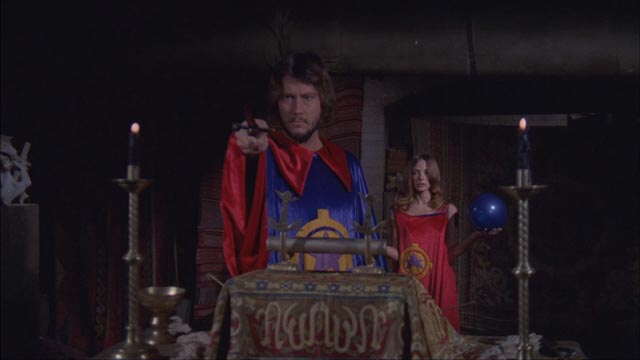
Simon, King of the Witches (1971), an interesting American exploitation movie from the same period, was one of only a few theatrical features by prolific television director Bruce Kessler. Playing its supernatural elements straight, it stars Andrew Prine as an actual warlock living rough in Los Angeles (his home is in a storm drain). Simon is disinterested in material things, having devoted his life to the study of magic, a byproduct of which is rustling up a little cash by occasionally “performing” for bored wealthy people. His weakness is his ego, which bristles at expressions of doubt, eventually leading him to overdo the magic with apocalyptic results which get beyond his control. Like other low-budget horrors of the time, it doesn’t feel the need to couch its fantasy elements in irony, or deflect possible audience disdain with defensive comedy. The inventive script was by Robert Phippeny, whose only other credit is Hubert Cornfield’s underrated The Night of the Following Day (1969). The movie is well photographed by Stu Phillips (who followed it immediately with Russ Meyer’s studio-produced feature The Seven Minutes [1971]), but its biggest asset is Prine who, as Simon, gives a career-best performance.
*
Psyche 59 (Alexander Singer, 1964)
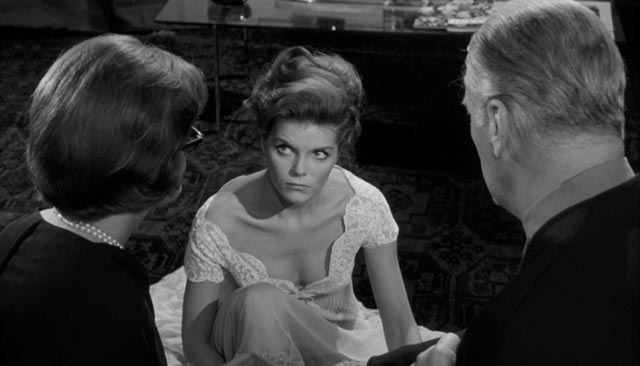
in Alexander Singer’s Psyche 59 (1964)
Based on a French novel by Françoise des Ligneris, Psyche 59 (1964) is an oddity which was greeted at the time with critical disdain and pretty much vanished until its recent reappearance on Blu-ray courtesy of Indicator. Scripted by Julian Halevy (aka Julian Zimet), whose other credits include Edgar G. Ulmer’s western The Naked Dawn (1955), Andrew Marton’s Crack in the World (1965) and Eugenio Martin’s Horror Express (1972), it’s an odd mix of old-fashioned melodrama and post-Code sexual openness. Transferred to an English setting and directed by American TV director Alexander Singer (who had co-produced Stanley Kubrick’s The Killing [1956]), it flirts continually with absurdity in its treatment of psychological dysfunction, which is reminiscent of Hollywood in the ’40s. Some trauma suffered by Patricia Neal just before the birth of her second child has rendered her psychosomatically blind. (Despite the pop psychology elements, the title is actually a reference to the story of Psyche and Cupid from Apuleius’ The Golden Ass, adding to the film’s air of pretension.) When her recently divorced younger sister (Samantha Eggar) returns from the States to live with her and her husband (Curt Jurgens), it’s obvious what the trauma was. Sis immediately hits on hubby, flaunting her sexuality in front of Pat, whose mind refuses to see the betrayal. It all goes back to fierce childhood sibling rivalry. The film is entertaining in its overwrought absurdity, with the three stars’ different acting styles clashing in interesting ways. Eggar pretty much walks away with the movie with a performance which probably got her the role of Miranda in William Wyler’s The Collector immediately after this.
*
Night of the Demon (Jacques Tourneur, 1957)
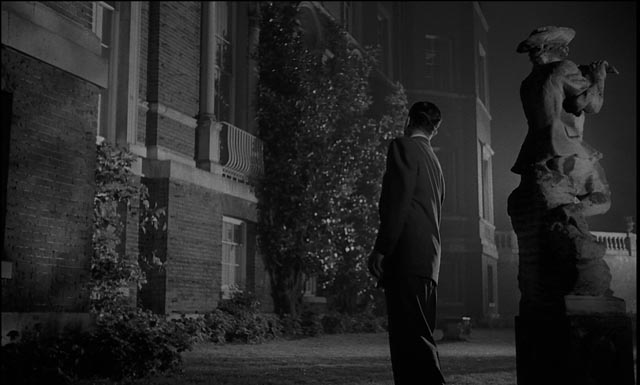
The British theatrical cut of Jacques Tourneur’s Night of the Demon (1957) is just one of six options on Indicator’s exceptional limited edition Blu-ray. It shares disk two with the U.S. theatrical variant, Curse of the Demon, while disk one has the longer British pre-release version and the equivalent U.S. reissue, both in two different aspect ratios (1.66:1 and 1.75:1). I watched the pre-release version back when I first received the set, because it’s always seemed the best option, but the other day I took a look at the theatrical release, which is fourteen minutes shorter. There are numerous small trims, some alternate shots and, towards the end, several complete sequences cut out — the most significant being Holden’s visit to the Hobart farm where he has a tense encounter with menacing Devil-worshiping peasants – but on the whole it’s a more-than-competent abridgement.
Night of the Demon is one of those famous cases in which what began as a great movie ended up compromised by producer interference, specifically the crass Hal Chester’s insistence on adding a lot of shots of the Demon after Tourneur was finished with the film. Not surprisingly, the former protege of Val Lawton had intended to use suggestion, leaving room for a psychological rather than supernatural explanation of events. I’ve always been a bit ambivalent about it, because I quite like the design of the monster, which has a kind of Medieval authenticity. But I have to admit that with the clarity of high-definition it would be better with a bit less exposure.
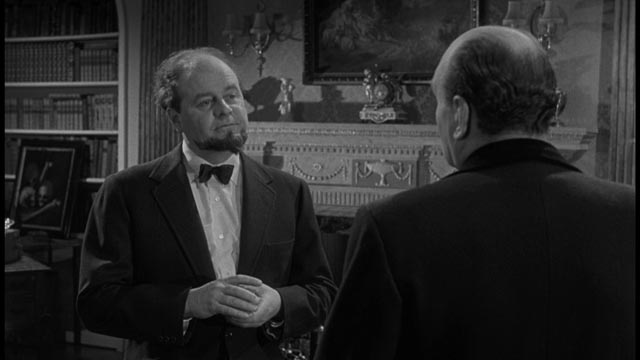
Regardless of the damage done by Chester, much of the film is so good that the flaws are easy to forgive. The cast is excellent. Dana Andrews’ Holden is an arrogant rationalist whose ego gives him a blind spot which almost gets him killed, while Niall MacGinnis walks away with the movie as the magician Karswell who is himself ultimately destroyed by his own egotism, which makes it impossible for him to tolerate others’ doubts about his power (rather like Simon!). And there are a number of scenes and set-pieces which rank with the best work Tourneur ever did: Holden’s meeting with Karswell at the British Museum, the wind storm which devastates the children’s garden party, Holden being pursued through the woods at night, the seance, and the final tense confrontation on the train.
Needless to say, the overall quality of the set is very impressive, though for some reason there’s some odd digital artifacting in Sony’s hi-def transfer of the 1.66:1 pre-release version, particularly noticeable in the title sequence shots of Stonehenge, in which the monoliths seem to float unattached to each other … these shots are completely stable in the 1.66:1 reissue version and the BFI’s 2K restorations of both versions in 1.75:1. There’s a commentary by author Toby Earnshaw on the pre-release version, and disk two includes hours of extras which tell you pretty much everything you could ever want to know about the film … plus there’s a fat booklet with essays, interviews, and a reproduction of the press book. Definitely one of Indicator’s finest releases to date.
*
The Wild Boys (Bertrand Mandico, 2017)
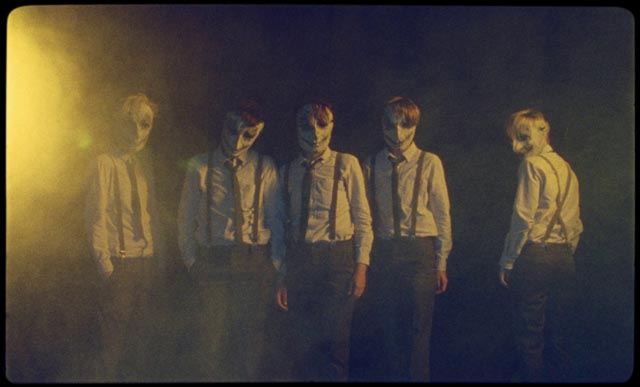
Although the nearly complete disappearance of disk retail has virtually eliminated the pleasure of accidental discovery, it can still occasionally happen. Just before my surgery, I was browsing through the small video section of a local bookstore when I came across a disk with a striking cover released by a company I’d never heard of – Altered Innocence, dedicated to LGBTQ issues, with only three releases listed on their website. I picked it up based purely on the packaging, the brief blurb and a few laudatory critical quotes.
The Wild Boys (2017) is the first feature of French experimental filmmaker Bertrand Mandico, a phantasmogoric adventure shot on the exotic island of La Réunion (previously used as a location for Truffaut’s Mississippi Mermaid [1969]). It’s about gender definition and fluidity and the transformation of testosterone-fueled violence into something more positive. Around the turn of the last century, a group of privileged boys commit a horrific act of violence, pushing responsibility at their trial onto their female victim. In an attempt to instill discipline, the boys’ parents put them in the hands of a sea captain who takes them to an island where they are exposed to danger and pleasure in equal amounts, finding themselves gradually evolving into women in whom violence is displaced by sensual pleasures.
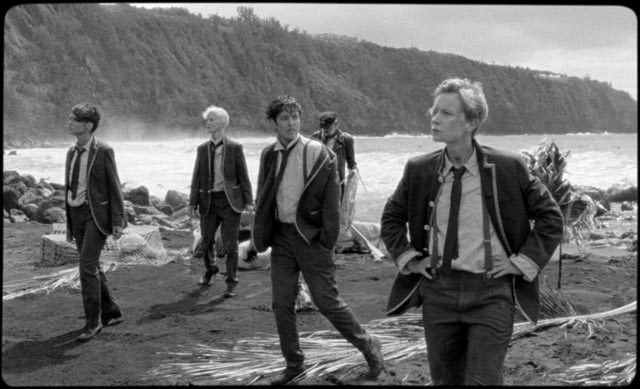
Shot on 16mm in a theatrical style infused with surrealism, no doubt it’s fruitless to look for prior models for something this original, but The Wild Boys reminded me of the work of Walerian Borowczyk, or maybe Guy Maddin if he could manage to discard his protective armour of irony for a moment, with echoes of Kenneth Anger and Fassbinder’s Querelle (1982). The boys are all played by actresses (equipped with prosthetics) who emphasize the performative aspect of masculinity, which Mandico systematically deconstructs as he explores alternative, more positive, non-binary conceptions of gender. Visually lush, visceral and sensual, the film is both disturbing and exhilarating.
The Wild Boys looks quite stunning on the Blu-ray, with a lot of fine detail in the image and a striking use of in-camera composite effects. Extras include a lengthy selection of deleted scenes and outtakes (without sound) and an impressionistic behind-the-scenes featurette by co-star Elina Löwensohn .
Comments